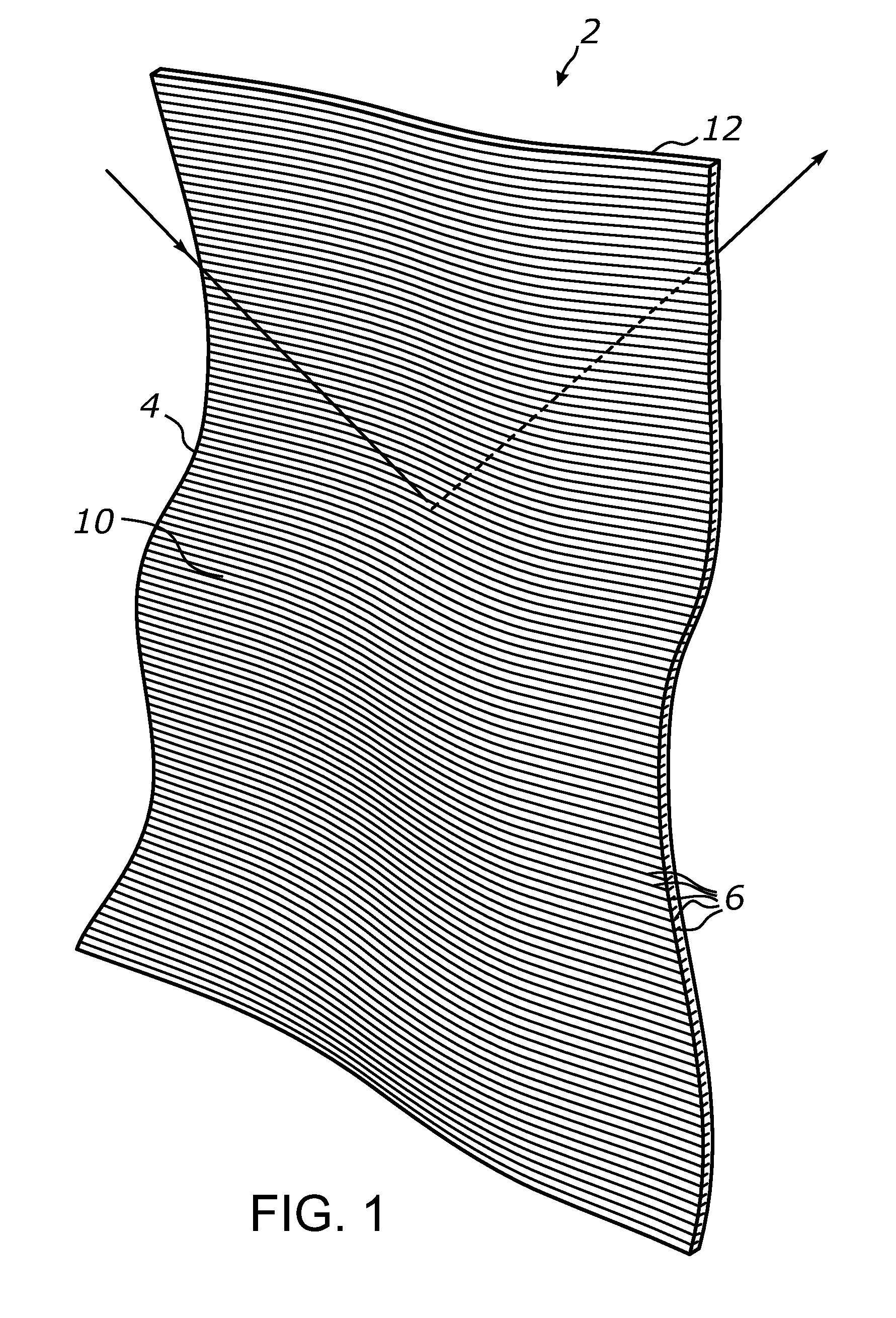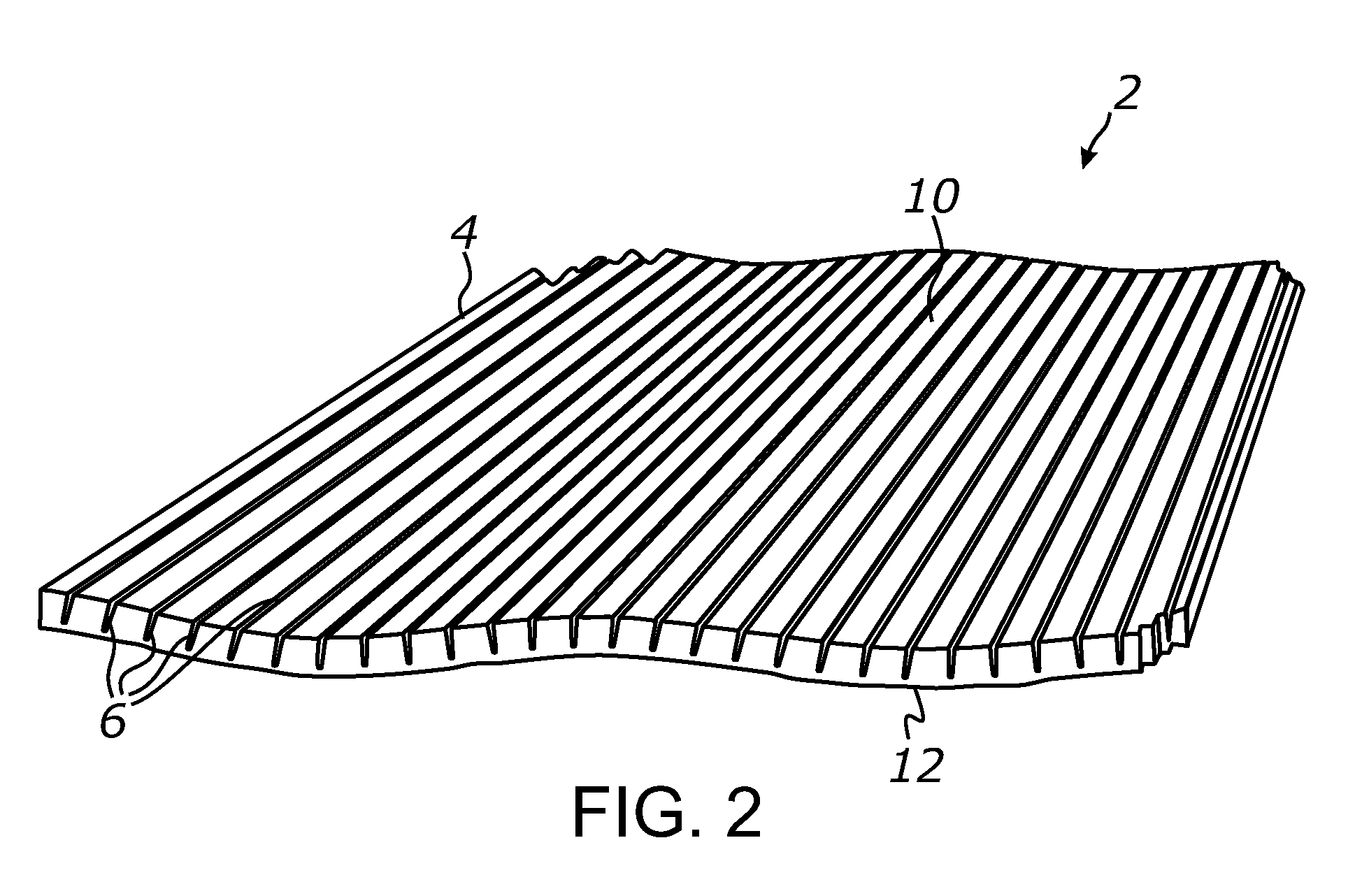Daylighting fabric and method of making the same
a daylight fabric and fabric technology, applied in the field of natural lighting, can solve the problems of slits and slit lengthening of sheet material, and achieve the effect of minimizing surface roughness and high edge quality
- Summary
- Abstract
- Description
- Claims
- Application Information
AI Technical Summary
Benefits of technology
Problems solved by technology
Method used
Image
Examples
example 1
[0240]A rectangular sheet of 40-gauge (around 1 mm-thick) clear flexible vinyl
[0241](PVC) was formed into a loop and elastically stretched between two spaced apart, parallel rollers at a constant tension. A straight-edge rotary blade made from tungsten tool steel and manufactured by OLFA was used to produce an array of parallel slits in the flexible PVC sheet. The blade had the diameter of 28 mm and the thickness of around 0.3 mm (OLFA product number RB28). The blade was positioned perpendicular to the stretch direction on a linear guiding rail system and the slitting action was performed by a reciprocal movement of the blade through the entire width of the vinyl sheet using a linear actuator. The feed of the flexible vinyl sheet was performed by rotating the feed roller in small angular increments using a stepped drive coupled to the roller's axis. The depth of blade penetration into the sheet material was 0.75 mm which produced linear slits with nearly vertical walls and the depth...
example 2
[0245]A rectangular sheet of 40-gauge clear flexible vinyl was prepared and processed in much the same manner as in Example 1 except that another cutting blade was used. The new blade was a 28-mm rotary tungsten steel / carbon steel blade manufactured by Kai Industries (part #C-280BL). Such blades yielded the RMS surface profile roughness parameter Rq in the range between 0.012 μM (12 nm) and 0.025 μM (25 nm), corresponding to the calculated specular TIR reflectivity of the slit surfaces of at least 85% for the entire targeted range of incidence angles θi (from 49° to 90°). When exposed to direct sunlight, the processed sheet has produced a similar bright spot on the ceiling by redirecting the respective beam form the original propagation direction.
[0246]FIG. 15 depicts an exemplary surface profile measured for a wall of one of the slits made in Example 2 above. The X coordinate shows a local linear coordinate on the surface of the slit wall measured along the perpendicular to the lon...
PUM
| Property | Measurement | Unit |
|---|---|---|
| surface roughness | aaaaa | aaaaa |
| surface roughness | aaaaa | aaaaa |
| thickness | aaaaa | aaaaa |
Abstract
Description
Claims
Application Information
 Login to View More
Login to View More - R&D
- Intellectual Property
- Life Sciences
- Materials
- Tech Scout
- Unparalleled Data Quality
- Higher Quality Content
- 60% Fewer Hallucinations
Browse by: Latest US Patents, China's latest patents, Technical Efficacy Thesaurus, Application Domain, Technology Topic, Popular Technical Reports.
© 2025 PatSnap. All rights reserved.Legal|Privacy policy|Modern Slavery Act Transparency Statement|Sitemap|About US| Contact US: help@patsnap.com



